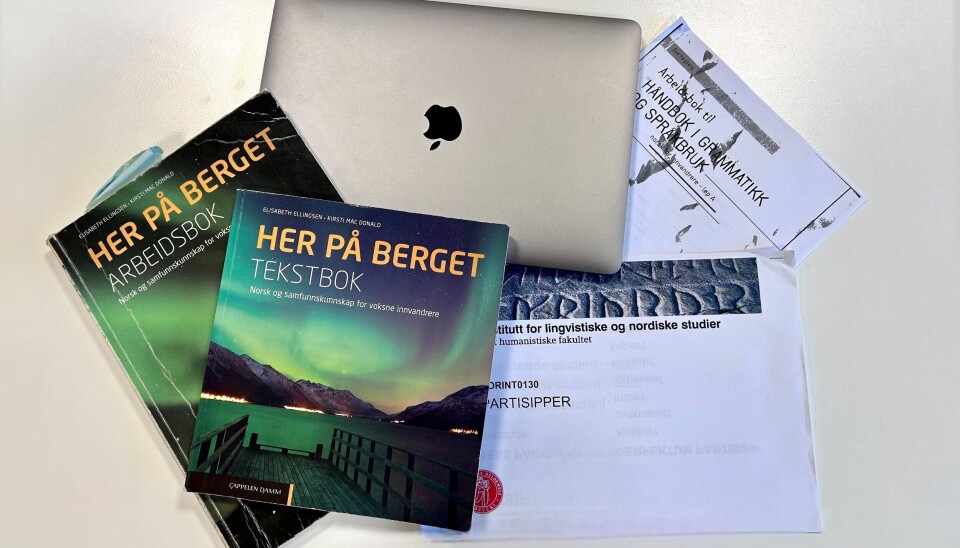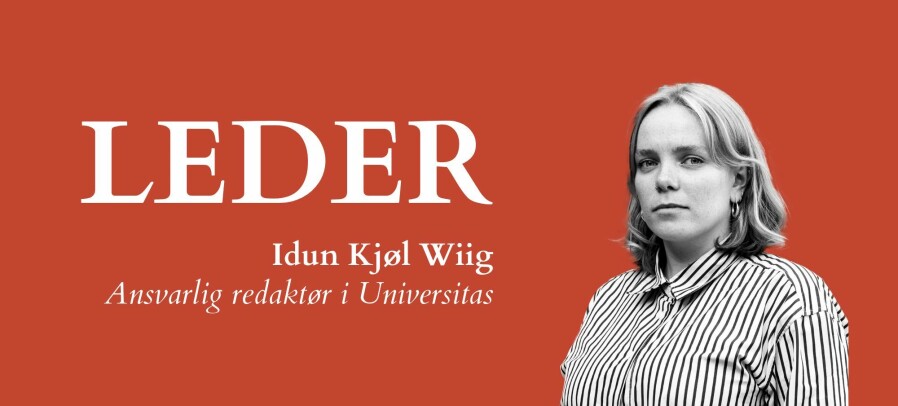
Do UiO's Language Courses Adequately Prepare Those Who Wish to Stay in Norway?
Find out what skills former NORINT0130 students feel they are still lacking day-to-day.
Are international students satisfied with the Norwegian classes offered by UiO? Do those who plan to continue studying or start working in Norway feel prepared to do so after completing “Norwegian Level 3”? I interviewed four students about what they thought about the courses offered by UiO.
Learning the Language at UiO
The University of Oslo offers 4 different levels of Norwegian language courses to international students. Level 1 and 2 focus mainly on the basics and grammar structures, while Level 3 is an intense 20-credit course that aims to improve the students’ fluency. It also helps to prepare them for further studies or work in an environment where Norwegian is the primary language. Level 4 is also known as “Continuation of level 3,” in which there are two separate 5 credit classes; one focusing on writing and other on speaking.
Find the courses and requirements here: Courses and registration - Department of Linguistics and Scandinavian Studies
Level 3 Norwegian is Required for Norwegian Degrees
If one decides that they want to go on to study a full-time degree in Norwegian, it is required that the student has obtained at least a C in both writing and speaking in the level 3 exams. Do students feel confident in taking exams and, potentially, writing a thesis in Norwegian after this course? I interviewed a few students who took level 3 last year to find out.
How Satisfied Were the Students With the Level 3 Course Overall?
Registering for Norwegian Level 3 is a significant step, and no small feat. The course consists of two four-hour seminars per week. Additionally, students have the option to attend a two-hour grammar lecture once a week.
Although the thought of spending at least eight hours a week studying Norwegian with the same group of people may seem daunting, Ingeborg, a student from the Netherlands, enjoyed the course and the opportunity to spend time with her classmates. She said, “The atmosphere was so good and it felt like we became one big happy family. There was no judgement and there was a lot of openness.”
It is important for students to remember that in order to truly improve, they must be willing to speak and make mistakes. Cristina, a student from Romania, appreciated the focus on speaking skills. She said, “What I enjoyed the most was the fact that the teaching was centred around speaking competences, something I have not seen so often in other learning environments.”
Genís, a full-time student at UiO, also enjoyed the social component, “The activities are aimed at making us discuss, it is very easy to get to know your classmates, and that makes the learning more enjoyable.”
Insufficient Writing Practice
However, despite their appreciation for the speaking and social aspects of level 3, all the students I interviewed expressed some disappointment with the writing and grammar aspect.
“I love to learn about grammar, but I feel like we didn’t go as deep into it as I expected on level 3. I would have loved more advanced grammar lectures,” stated Ingeborg. Genís agreed with this and added, “Perhaps it would have been nice to have more writing practice.”
It's crucial for students who plan to pursue a full-time degree to feel confident in their writing skills. No one wants to spend too much time thinking about grammar structures during an exam. As French student Amélie expressed, “Sometimes I wish we would have gone over very basic grammar exercises and such together. Even though it can sometimes be quite boring to do grammar, I think that mastering it is really important.”
Were Students Prepared Enough for a Full-Time Degree or Work in Norway?
Level 3 is a popular course, as it significantly improves your Norwegian language skills. All the students agreed that their Norwegian expertise had improved. “It [level 3] gave me a broad vocabulary for relevant topics,” said Genís, who works part-time as a maths tutor.
Ingeborg, who is currently taking a master’s degree in Sociology, said, “I feel like I am fluent enough to be able to follow lectures in Norwegian and talk in seminars. Of course, there are still challenges, but I feel like it is doable.” Amélie agreed, “Overall, yes, I do feel like I was prepared enough for the degree, but I still face difficulties every day, and at first, I didn’t know how confident I felt. Even though I could understand nearly everything, I always felt one step behind my Norwegian classmates, but I guess that’s normal.”
Although international students manage to converse with Norwegian students, they still struggle with being precise. “I also feel like my vocabulary is not wide enough to really have good conversations in which I can express exactly what I want to say,” commented Ingeborg.
A Lack of Dialect and Nynorsk Familarisation
Should Level 3 Teach Nynorsk?
When you take on a full-time degree or job in a Norwegian-speaking workplace, you may encounter some different dialects that you have never heard in a Norwegian course before. You might also have to read texts that are written in Nynorsk – one of the two official written languages in Norway, which is mainly used in the western parts of the country. However, in the main language courses offered the focus is primarily on Bokmål. Does this cause future difficulties for students? Both Genís and Ingeborg seem to believe that focusing on Bokmål first is the leading aim.
“I think mastering Bokmål is more important to me than knowing a little bit of both. Once I feel like I really master Bokmål, I can think about learning Nynorsk in my own time,” said Ingeborg.
“I am happy enough that we did not learn Nynorsk. I think that at the level we are, we can understand Nynorsk well enough,” agreed Genís.
However, Cristina and Amélie would have liked to have had a little bit more emphasis on Nynorsk offered in level 3.
“I can’t say that I am disappointed, since Bokmål is the most taught version, but yes, I would have absolutely loved being given the chance of learning a bit of Nynorsk, too,” admitted Cristina.
“I do think that we should mostly focus on Bokmål, but maybe there could be an introduction to Nynorsk, just to be a bit more aware of the differences,” remarked Amélie.
When asked about the lack of Nynorsk had hindered them in their studies or work, all of them said no, apart from Amélie who is taking a degree in a humanities (she preferred to not specify which): “I understand that not everyone feels the need to learn Nynorsk for their degrees and jobs, but I study a degree in the humanities’ branch so there are a lot of texts and books that are written in Nynorsk. I actually took a course for Nynorsk and dialects for international students after I had passed level 3, and that course saved me. It taught me the basics and enabled me to read the curricula and novels in Nynorsk.”
This is the course Amélie mentions: NORINT2115 – Dialektar, nynorsk og språkhistorie i eit framandspråksperspektiv – Universitetet i Oslo
A Need for Greater Exposure to Dialect Variations
When it comes to understanding different dialects, the students seem to struggle. It appears that all the students interviewed agreed that more familiarity with different dialects would have been valued.
“Maybe more variability of dialects in the audiovisual content of the course would have been good,” said Genís.
“A little dialectal diversification would have been ideal,” commented Cristina.
Ingeborg also expressed that not being too familiar with different dialects was something she struggled with in her Master’s, especially with one lecturer from Bergen:
“[...] now in the second semester I suddenly noticed it when I had a lecturer from Bergen who has a very strong dialect, and I struggled to understand her in the first few lectures. It has become better now, but I still have to focus more than when the lecturer is from Oslo.”
Amélie expressed similar views, “I think being slightly more familiarised with different dialects would have been ideal. One of my classmates is from Northern Norway, and I really struggled to understand them. It's better now, but I was so unfamiliar with it.”
Students Are Expected to Have Danish and Swedish Comprehension Skills, Too
When you pursue a full-time Norwegian degree at UiO (and most probably, all Norwegian universities), you could have a Swedish or Danish speaking lecturer or even have readings to do in these two languages.
Inter-Scandinavian, as it is often called, is highly regarded, and it is important that students learn to understand Swedish and Danish, as they may end up working in a company that uses all of these languages. This is already a challenge for Norwegians, let alone for international students.
Ingeborg had a Danish lecturer in one of her courses, which proved to be a real challenge, she said, “ Besides the lecturer from Bergen, I had a Danish lecturer, just to make the struggle worse. He was even more difficult to understand and I still struggle with that. I feel some relief when I hear from others — Norwegians — in my course who struggle with understanding him, too. I am not alone in this.”
Amélie, who studies humanities, has to read texts not only in nynorsk but also in Swedish and Danish. “A lot of the texts in my syllabus are in Danish and Swedish. I have even had a novel to read in Swedish! Danish is not so difficult; I feel like once you know bokmål, it’s not too bad, but Swedish is really difficult for me to read.”
However, whether or not students should have training in Inter-Scandinavian during level 3 is the question. It seems that the focus is to learn Norwegian first and foremost. As Genís stated:
“I don’t think the Norwegian course should cover this, after all, its goal is to teach Norwegian.”
Amélie agreed but believes a separate course on this subject could be interesting: “Even though I didn’t have any experience with reading Swedish or Danish before, I still manage. So no, I do not think level 3 Norwegian should teach this. However, I would have absolutely loved it if there was a separate course that covered it. If one is planning to stay and work in Norway or Scandinavia in general, it’s a really great skill to have!”
How Do Students Still Improve Their Norwegian Day to Day?
“I watch all my series with Norwegian subtitles,” said Ingeborg.
Although none of the students actively attend any type of Norwegian classes or use language apps, they make an effort to surround themselves in Norwegian by watching Norwegian TV series, always having Norwegian subtitles, and reading. Genís also noted that he regularly reads the news on NRK.
The students said that they do not care too much about actively learning anymore, as they feel like they improve the most by practising talking to Norwegians in real life daily. As Amélie stated, “There’s only so much you can learn in a classroom, now I just use Norwegian with the people around me and try to improve with practice.”
































